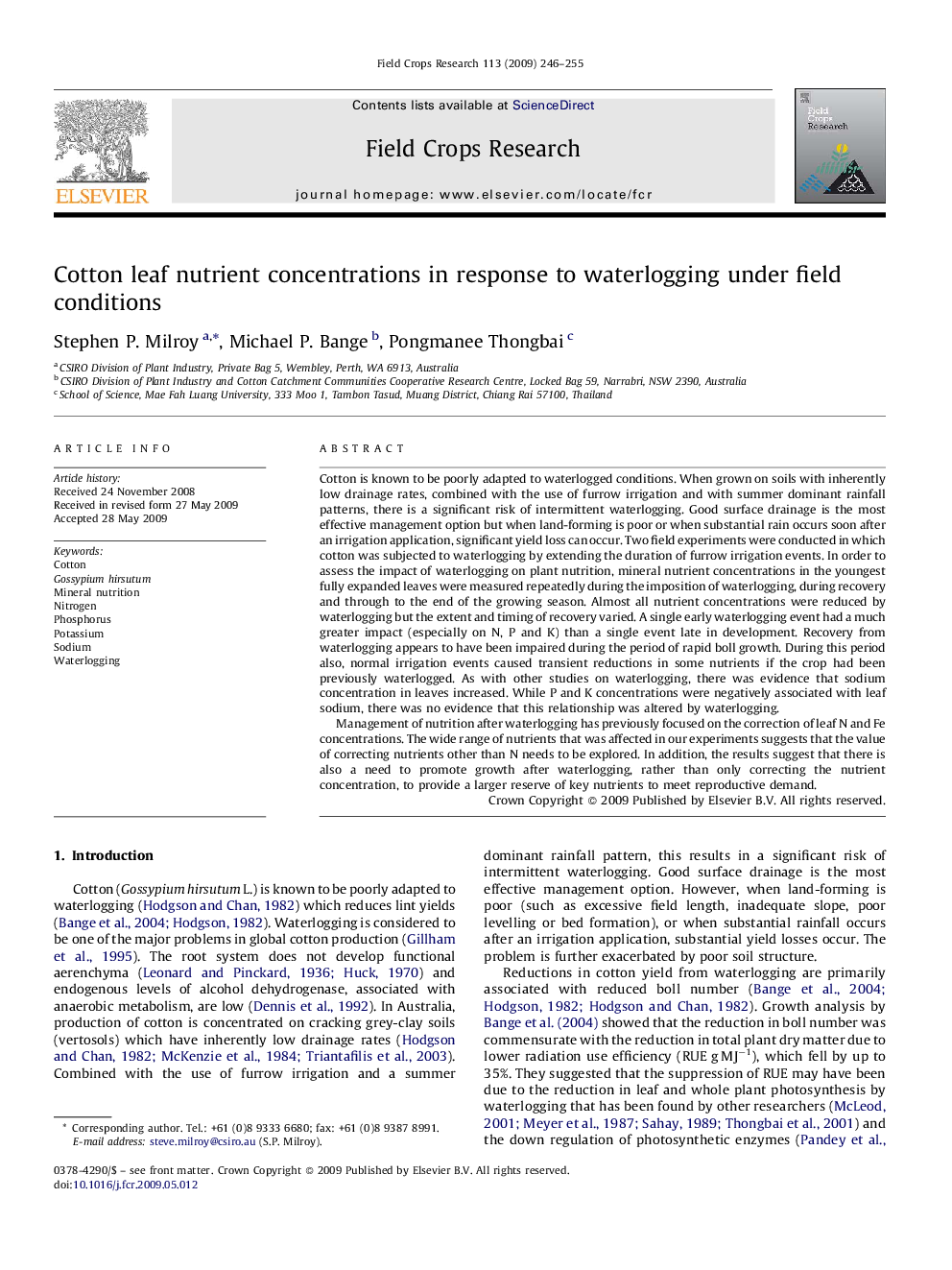| کد مقاله | کد نشریه | سال انتشار | مقاله انگلیسی | نسخه تمام متن |
|---|---|---|---|---|
| 4511074 | 1321890 | 2009 | 10 صفحه PDF | دانلود رایگان |

Cotton is known to be poorly adapted to waterlogged conditions. When grown on soils with inherently low drainage rates, combined with the use of furrow irrigation and with summer dominant rainfall patterns, there is a significant risk of intermittent waterlogging. Good surface drainage is the most effective management option but when land-forming is poor or when substantial rain occurs soon after an irrigation application, significant yield loss can occur. Two field experiments were conducted in which cotton was subjected to waterlogging by extending the duration of furrow irrigation events. In order to assess the impact of waterlogging on plant nutrition, mineral nutrient concentrations in the youngest fully expanded leaves were measured repeatedly during the imposition of waterlogging, during recovery and through to the end of the growing season. Almost all nutrient concentrations were reduced by waterlogging but the extent and timing of recovery varied. A single early waterlogging event had a much greater impact (especially on N, P and K) than a single event late in development. Recovery from waterlogging appears to have been impaired during the period of rapid boll growth. During this period also, normal irrigation events caused transient reductions in some nutrients if the crop had been previously waterlogged. As with other studies on waterlogging, there was evidence that sodium concentration in leaves increased. While P and K concentrations were negatively associated with leaf sodium, there was no evidence that this relationship was altered by waterlogging.Management of nutrition after waterlogging has previously focused on the correction of leaf N and Fe concentrations. The wide range of nutrients that was affected in our experiments suggests that the value of correcting nutrients other than N needs to be explored. In addition, the results suggest that there is also a need to promote growth after waterlogging, rather than only correcting the nutrient concentration, to provide a larger reserve of key nutrients to meet reproductive demand.
Journal: Field Crops Research - Volume 113, Issue 3, 4 September 2009, Pages 246–255